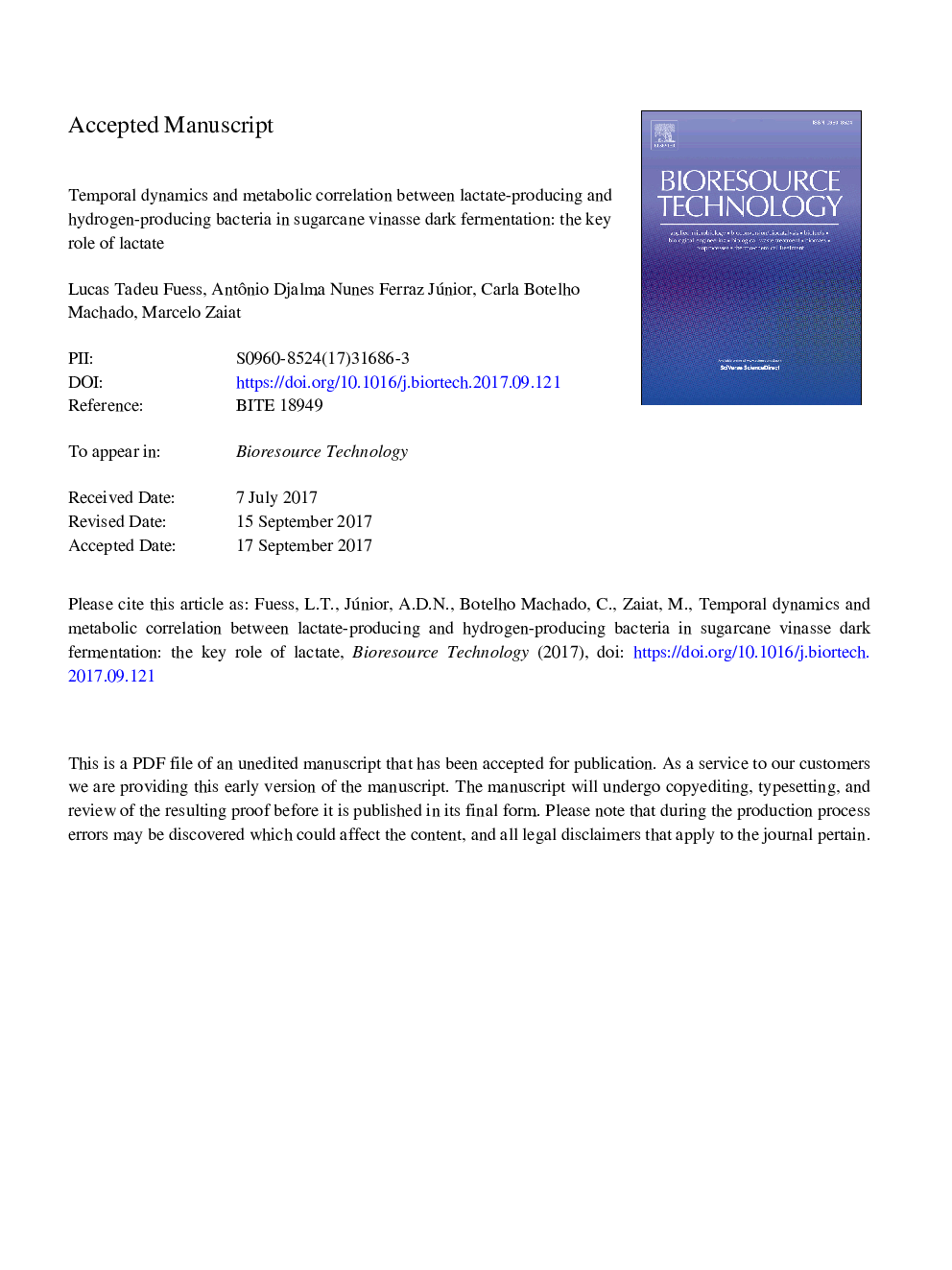| Article ID | Journal | Published Year | Pages | File Type |
|---|---|---|---|---|
| 7069566 | Bioresource Technology | 2018 | 36 Pages |
Abstract
This study aimed to better understand the role of different microbial groups and the determining fermentation pathways in a biohydrogen (bioH2)-producing reactor fed with sugarcane vinasse by using next-generation sequencing and principal component analysis (PCA). Both microbial structure and dynamics were characterized. The highest bioH2 production levels were associated with the Thermoanaerobacterium genus, whilst lactate-producing bacteria comprised the dominant genera (e.g. Lactobacillus and Leuconostoc) within the reactor at both stable and unstable bioH2-producing periods. PCA further revealed that the fermentation of lactate played a dual role in the reactor, as both bioH2-producing (acetate + lactate â butyrate + bioH2) and non-bioH2-producing (lactate â propionate + acetate) routes could be observed. Overall, the results suggested that lactate is the primary alternative carbon source in vinasse-fed systems subjected to carbohydrate-shortage conditions.
Related Topics
Physical Sciences and Engineering
Chemical Engineering
Process Chemistry and Technology
Authors
Lucas Tadeu Fuess, Antônio Djalma Nunes Júnior, Carla Botelho Machado, Marcelo Zaiat,
